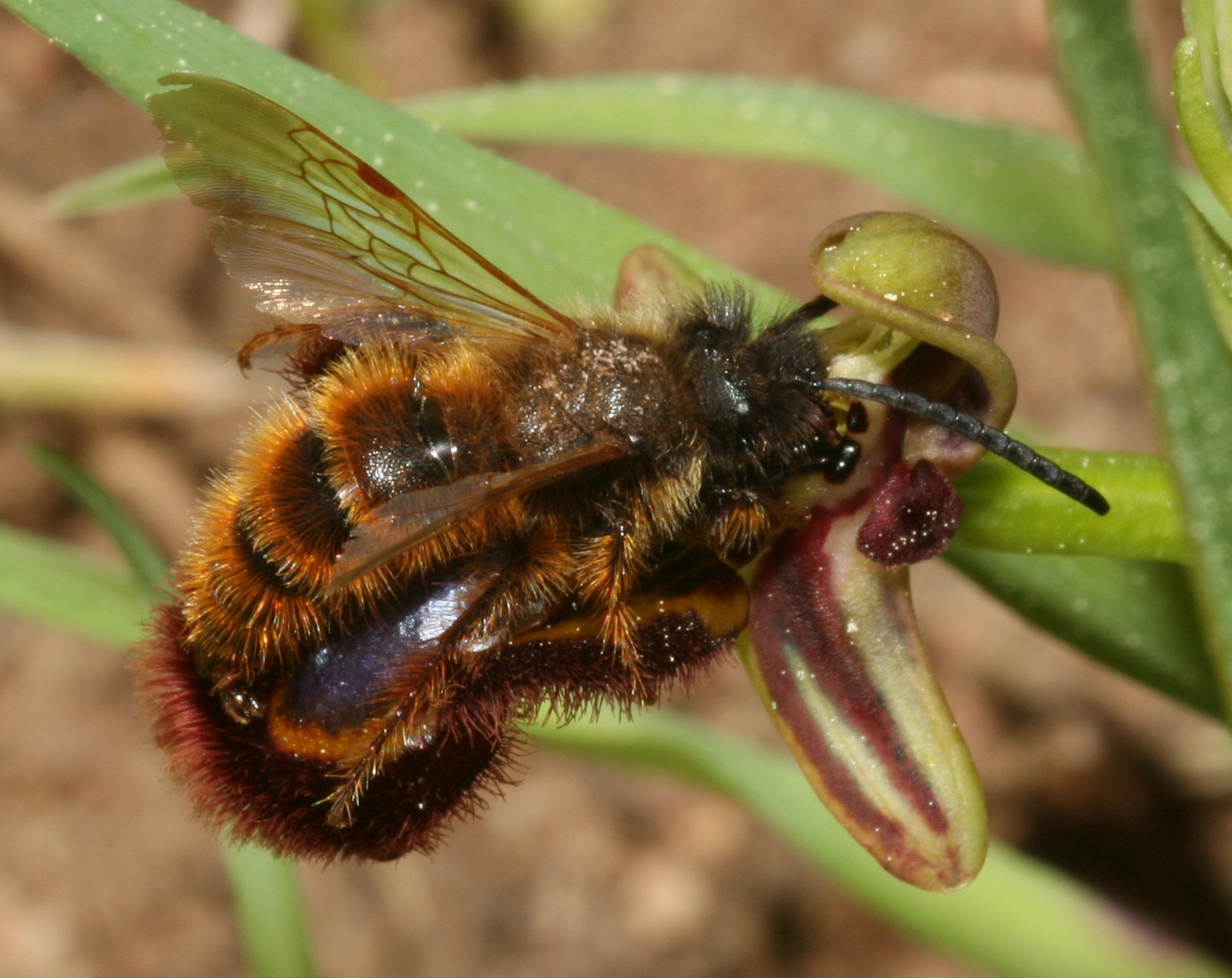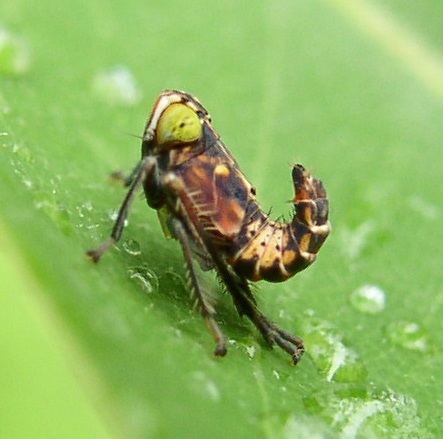|
Sulcia Muelleri
"''Candidatus'' Karelsulcia muelleri" is an aerobic organism, aerobic, Gram-negative bacteria, gram-negative, Bacillus (shape), bacillus bacterium that is a part of the phylum Bacteroidota. "''Ca.'' K. muelleri" is an obligate and mutualism (biology), mutualistic Symbiosis, symbiotic microbe commonly found occupying specialized cell compartments of sap-feeding insects called bacteriocytes. A majority of the research done on "''Ca.'' K. muelleri" has detailed its relationship with the host ''Homalodisca vitripennis''. Other studies have documented the nature of its residency in other insects like the maize leafhopper (''Cicadulina'') or the spittlebug (''Cercopoidea''). "''Ca.'' K. muelleri" is noted for its exceptionally minimal genome and it is currently identified as having the smallest known sequenced Bacteroidota genome at only 245 kilobases. Discovery "''Ca.'' K. muelleri" was classified under microscope in 2005 by the evolutionary biologist Nancy A. Moran. The endosymbiont ... [...More Info...] [...Related Items...] OR: [Wikipedia] [Google] [Baidu] |
Bacteria
Bacteria (; singular: bacterium) are ubiquitous, mostly free-living organisms often consisting of one biological cell. They constitute a large domain of prokaryotic microorganisms. Typically a few micrometres in length, bacteria were among the first life forms to appear on Earth, and are present in most of its habitats. Bacteria inhabit soil, water, acidic hot springs, radioactive waste, and the deep biosphere of Earth's crust. Bacteria are vital in many stages of the nutrient cycle by recycling nutrients such as the fixation of nitrogen from the atmosphere. The nutrient cycle includes the decomposition of dead bodies; bacteria are responsible for the putrefaction stage in this process. In the biological communities surrounding hydrothermal vents and cold seeps, extremophile bacteria provide the nutrients needed to sustain life by converting dissolved compounds, such as hydrogen sulphide and methane, to energy. Bacteria also live in symbiotic and parasitic re ... [...More Info...] [...Related Items...] OR: [Wikipedia] [Google] [Baidu] |
Maize Leafhopper
''Cicadulina mbila'', the maize leafhopper, is a leafhopper species in the genus '' Cicadulina''. It is found in sub-Saharan Africa (Kenya, Tanzania and Uganda), the Middle East, West Asia and India. It is one of the vectors of the maize streak virus ''Maize streak virus'' (MSV) is a virus primarily known for causing maize streak disease (MSD) in its major host, and which also infects over 80 wild and domesticated grasses. It is an insect-transmitted maize pathogen in the genus ''Mastrevirus ....Large accumulations of maize streak virus in the filter chamber and midgut cells of the leafhopper vector Cicadulina mbila. El-Desouky Ammar, Daniel Gargani, Jean M. Lett and Michel Peterschmitt, Archives of Virology, February 2009, Volume 154, Issue 2, pages 255-262, References External links Fact sheet at eafrinet/maize_pests Macrostelini Insects described in 1924 Insect vectors of plant pathogens Insects of the Middle East Insects of India Insect pests of millets [...More Info...] [...Related Items...] OR: [Wikipedia] [Google] [Baidu] |
Betaproteobacteria
Betaproteobacteria are a class of Gram-negative bacteria, and one of the eight classes of the phylum Pseudomonadota (synonym Proteobacteria). The ''Betaproteobacteria'' are a class comprising over 75 genera and 400 species of bacteria. Together, the ''Betaproteobacteria'' represent a broad variety of metabolic strategies and occupy diverse environments from obligate pathogens living within host organisms to oligotrophic groundwater ecosystems. Whilst most members of the ''Betaproteobacteria'' are heterotrophic, deriving both their carbon and electrons from organocarbon sources, some are photoheterotrophic, deriving energy from light and carbon from organocarbon sources. Other genera are autotrophic, deriving their carbon from bicarbonate or carbon dioxide and their electrons from reduced inorganic ions such as nitrite, ammonium, thiosulfate or sulfide — many of these chemolithoautotrophic. ''Betaproteobacteria'' are economically important, with roles in maintaining soil pH a ... [...More Info...] [...Related Items...] OR: [Wikipedia] [Google] [Baidu] |
Coevolution
In biology, coevolution occurs when two or more species reciprocally affect each other's evolution through the process of natural selection. The term sometimes is used for two traits in the same species affecting each other's evolution, as well as gene-culture coevolution. Charles Darwin mentioned evolutionary interactions between flowering plants and insects in ''On the Origin of Species'' (1859). Although he did not use the word coevolution, he suggested how plants and insects could evolve through reciprocal evolutionary changes. Naturalists in the late 1800s studied other examples of how interactions among species could result in reciprocal evolutionary change. Beginning in the 1940s, plant pathologists developed breeding programs that were examples of human-induced coevolution. Development of new crop plant varieties that were resistant to some diseases favored rapid evolution in pathogen populations to overcome those plant defenses. That, in turn, required the development o ... [...More Info...] [...Related Items...] OR: [Wikipedia] [Google] [Baidu] |
Hemiptera
Hemiptera (; ) is an order of insects, commonly called true bugs, comprising over 80,000 species within groups such as the cicadas, aphids, planthoppers, leafhoppers, assassin bugs, bed bugs, and shield bugs. They range in size from to around , and share a common arrangement of piercing-sucking mouthparts. The name "true bugs" is often limited to the suborder Heteroptera. Entomologists reserve the term ''bug'' for Hemiptera or Heteroptera,Gilbert Waldbauer. ''The Handy Bug Answer Book.'' Visible Ink, 1998p. 1. which does not include other arthropods or insects of other orders such as ants, bees, beetles, or butterflies. In some variations of English, all terrestrial arthropods (including non-insect arachnids, and myriapods) also fall under the colloquial understanding of ''bug''. Many insects with "bug" in their common name, especially in American English, belong to other orders; for example, the lovebug is a fly and the Maybug and ladybug are beetles. The term ... [...More Info...] [...Related Items...] OR: [Wikipedia] [Google] [Baidu] |
Cell Division
Cell division is the process by which a parent cell divides into two daughter cells. Cell division usually occurs as part of a larger cell cycle in which the cell grows and replicates its chromosome(s) before dividing. In eukaryotes, there are two distinct types of cell division: a vegetative division ( mitosis), producing daughter cells genetically identical to the parent cell, and a cell division that produces haploid gametes for sexual reproduction (meiosis), reducing the number of chromosomes from two of each type in the diploid parent cell to one of each type in the daughter cells. In cell biology, mitosis ( /maɪˈtoʊsɪs/) is a part of the cell cycle, in which, replicated chromosomes are separated into two new nuclei. Cell division gives rise to genetically identical cells in which the total number of chromosomes is maintained. In general, mitosis (division of the nucleus) is preceded by the S stage of interphase (during which the DNA replication occurs) and is often ... [...More Info...] [...Related Items...] OR: [Wikipedia] [Google] [Baidu] |
Auchenorrhyncha
The Auchenorrhyncha suborder of the Hemiptera contains most of the familiar members of what was called the "Homoptera" – groups such as cicadas, leafhoppers, treehoppers, planthoppers, and spittlebugs. The aphids and scale insects are the other well-known "Homoptera", and they are in the suborder Sternorrhyncha. Distributed worldwide, all members of this group are plant-feeders, and many are vectors of viral and fungal diseases of plants. It is also common for Auchenorrhyncha species to produce either audible sounds or substrate vibrations as a form of communication. Such calls range from vibrations inaudible to humans, to the calls of many species of cicadas that can be heard for hundreds of metres, at least. In season, they produce the most characteristic and ubiquitous noise of the bush. Etymology The word auchenorrhyncha is from the Greek αὐχήν, 'neck, throat' and ῥύγχος, 'snout'. Classification Debate and uncertainty as to whether the Auchenorrhy ... [...More Info...] [...Related Items...] OR: [Wikipedia] [Google] [Baidu] |
Hermann Joseph Muller
Hermann Joseph Muller (December 21, 1890 – April 5, 1967) was an American geneticist, educator, and Nobel laureate best known for his work on the physiological and genetic effects of radiation (mutagenesis), as well as his outspoken political beliefs. Muller frequently warned of long-term dangers of radioactive fallout from nuclear war and nuclear testing, which resulted in greater public scrutiny of these practices. Early life Muller was born in New York City, the son of Frances (Lyons) and Hermann Joseph Muller Sr., an artisan who worked with metals. Muller was a third-generation American whose father's ancestors were originally Catholic and came to the United States from Koblenz. His mother's family was of mixed Jewish (descended from Spanish and Portuguese Jews) and Anglican background, and had come from Britain. Among his first cousins are Herbert J. Muller and Alfred Kroeber (Kroeber is Ursula Le Guin's father). As an adolescent, Muller attended a Unitarian church and c ... [...More Info...] [...Related Items...] OR: [Wikipedia] [Google] [Baidu] |
Bacteriome
A bacteriome is a specialized organ, found mainly in some insects, that hosts endosymbiotic bacteria. Bacteriomes contain specialized cells, called bacteriocytes, that provide nutrients and shelter to the bacteria while protecting the host animal. In exchange, the bacteria provide essentials like vitamins and amino acids to the host insect. Bacteriomes also protect the bacteria from the host's immune system, with insects secreting antimicrobial peptides such as the coleoptericin secreted by weevils to keep bacteria within the bacteriome. Some insects, like the glassy-winged sharpshooter, host more than one species of bacteria. In armored scale insects, bacteriomes have unique genetic and sexual properties. For example, they have five copies of each chromosome—including two copies of the mother's complete genome. See also * Trophosome A trophosome is a highly vascularised organ found in some animals that houses symbiotic bacteria that provide food for their host. Trophoso ... [...More Info...] [...Related Items...] OR: [Wikipedia] [Google] [Baidu] |
Moravia
Moravia ( , also , ; cs, Morava ; german: link=yes, Mähren ; pl, Morawy ; szl, Morawa; la, Moravia) is a historical region in the east of the Czech Republic and one of three historical Czech lands, with Bohemia and Czech Silesia. The medieval and early modern Margraviate of Moravia was a crown land of the Lands of the Bohemian Crown from 1348 to 1918, an imperial state of the Holy Roman Empire from 1004 to 1806, a crown land of the Austrian Empire from 1804 to 1867, and a part of Austria-Hungary from 1867 to 1918. Moravia was one of the five lands of Czechoslovakia founded in 1918. In 1928 it was merged with Czech Silesia, and then dissolved in 1949 during the abolition of the land system following the communist coup d'état. Its area of 22,623.41 km2 is home to more than 3 million people. The people are historically named Moravians, a subgroup of Czechs, the other group being called Bohemians. Moravia also had been home of a large German-speaking p ... [...More Info...] [...Related Items...] OR: [Wikipedia] [Google] [Baidu] |
Endosymbiont
An ''endosymbiont'' or ''endobiont'' is any organism that lives within the body or cells of another organism most often, though not always, in a mutualistic relationship. (The term endosymbiosis is from the Greek: ἔνδον ''endon'' "within", σύν ''syn'' "together" and βίωσις ''biosis'' "living".) Examples are nitrogen-fixing bacteria (called rhizobia), which live in the root nodules of legumes, single-cell algae inside reef-building corals and bacterial endosymbionts that provide essential nutrients to insects. There are two types of symbiont transmissions. In horizontal transmission, each new generation acquires free living symbionts from the environment. An example is the nitrogen-fixing bacteria in certain plant roots. Vertical transmission takes place when the symbiont is transferred directly from parent to offspring. It is also possible for both to be involved in a mixed-mode transmission, where symbionts are transferred vertically for some generation bef ... [...More Info...] [...Related Items...] OR: [Wikipedia] [Google] [Baidu] |




